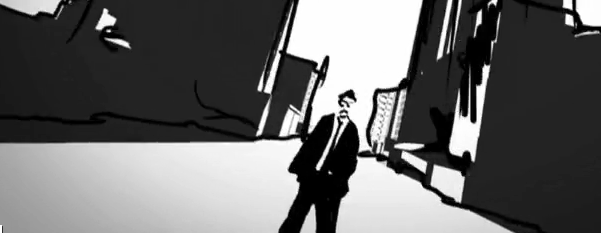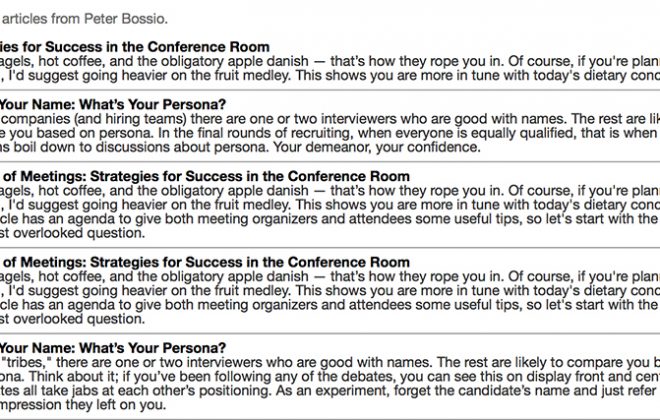Video Blog Expert Tips / Part 1: Presentation
This is the first in a multi-part series on improving video blog quality. The series will cover presentation, lighting, sound, editing and camera tips. So lets dive in with presentation and we’ll get to camera, lighting, editing and sound quality in follow up posts.
1. First and foremost – learn to talk in sound bytes.
Video is not the printed page. In order to be interesting, informative and keep a viewer’s full attention it must have a conversational tone. Even if you pre-write your script you’ll want to read it aloud to weed out words you would not use in real life conversation. I’m not going to lecture you about grammar because I’m not that type of guy, but what I do know is that when speaking on camera you’ll want to make good use of the period. Trust me when I say “Run-on-sentences will be the death of you if you ever try to edit”. I know what you’re thinking: how do I explain a complex thought in a sound byte and what if I don’t plan to edit later?
Here is an Example:
Look at it this way: — even if you never touch an editing program you still need to breath right? — Well without building in some natural breathing points — after a few words your lungs will not have enough power — to hit your key points. More importantly, — trying to do a whole video post – without building in strategic breathing points — is a sure-fire way to make you pass-out cold. — So, please — learn to talk in sound bytes.
Now, why does this work well for editing? In the example above pay attention to the dashes. If each dash was one beat (or one breath) you would edit on or between the dashes. Writing out your script in this fashion also helps in that you can alter the amount of dashes to build in some desired pacing.
Didn’t nail your performance on the first try? No worries, use those built it edit points to swap out for a better take where you didn’t stumble over your words. Hah, and you didn’t think I could convince you to try editing. We’ll save the more advanced stuff for follow up posts, for now know that if you build in natural pauses you’ll have more options later.
Pro-Tip: Once you get good at talking in sound bytes consider yourself media trained for the “Big Time”. That’s right this technique works great for any on-camera appearance including live television. Additionally, if you ever have an opportunity to share clips with other productions professional editors will appreciate and be more willing to include clips of you in their projects if your thoughts are clear and formatted in easily digestible sound bytes.
2. Eliminate Umms, Ahhs
Once you’ve mastered the sound byte next I’d suggest training yourself to not say “umm” or “ahh” or similar filler words between thoughts. Instead be silent. This will appear to the viewer as you being insightful and will give you additional clean edits. It takes practice but the end results are worth it.
3. Wandering eye syndrome
Equally distracting to the viewer is what I call “Wandering eye syndrome” now I’m not talking about the knee jerk reaction when your significant other can’t keep there eyes to themselves. No, this is more serious because this one weakens your credibility as a blogger. Basically, think of it like this: as in high stakes poker the first to break eye contact looses. Do it once we discover your “tell” now every time you look away from the camera we’ll know you’ve either lost your place or are making stuff up as you go. Basically, it comes down to this “don’t let us see you thinking on camera” you should always look confident and intentional in what you are saying.
Pro Tip: Want that raw style without getting flustered – try this method: prep an outline with large text before you turn on the camera. Print it out large and tape it next the lens. If you get lost quickly glance at your bullets then re-establish eye contact. Now that you’ve got an Ace up your sleeve lets move into stylistic decisions.
4. Sit-down vs. Stand-and-Deliver
Are you the type of person that prefers the comfort of a “sit-down”? Its popular because our center of gravity is lower and we don’t have to worry about body language as much. The two big problems to watch out if you go with this style are:
1. It’s easy to slouch down in the chair. This makes you look less engaging.
Instead lean forward, sit on the edge of your chair.
2. Swivel chairs and jumping beans. With such a tight camera frame even a small movement speaks volumes. Don’t swivel, don’t fidget but do consider using a stationary chair.
Want to come off more animated and engaging? Ditch the sit down all together in favor of the Stand and Deliver. Standing gives you ability to use body language but be careful you must know your frame. In other words please don’t walk or wave your arms outside where the viewer can see and never turn your back to us unless you’re a supermodel blogging for Calvin Klein. We’ll explore camera angles in a follow up post but in both styles do whatever you can to get the camera at eye level, I’ll explain why in the follow up post on camera decisions.
Practice these tips and you’ll see a huge improvement in quality without spending a dime. The next post in this series will cover pre-planning and lighting. Check back in a few weeks or sign up for my mailing list to receive post updates.
Related Posts
Warning: count(): Parameter must be an array or an object that implements Countable in /home/peterb20/public_html/wp-content/themes/jevelin/single.php on line 158
Leave a Reply
You must be logged in to post a comment.
Recent Posts
Categories
- – (1)
- Articles (1)
- Audio (1)
- Events (2)
- Interviews (7)
- Opinion piece (1)
- Tech (1)
- Tutorials (1)
- Video (1)
- What's New (3)


